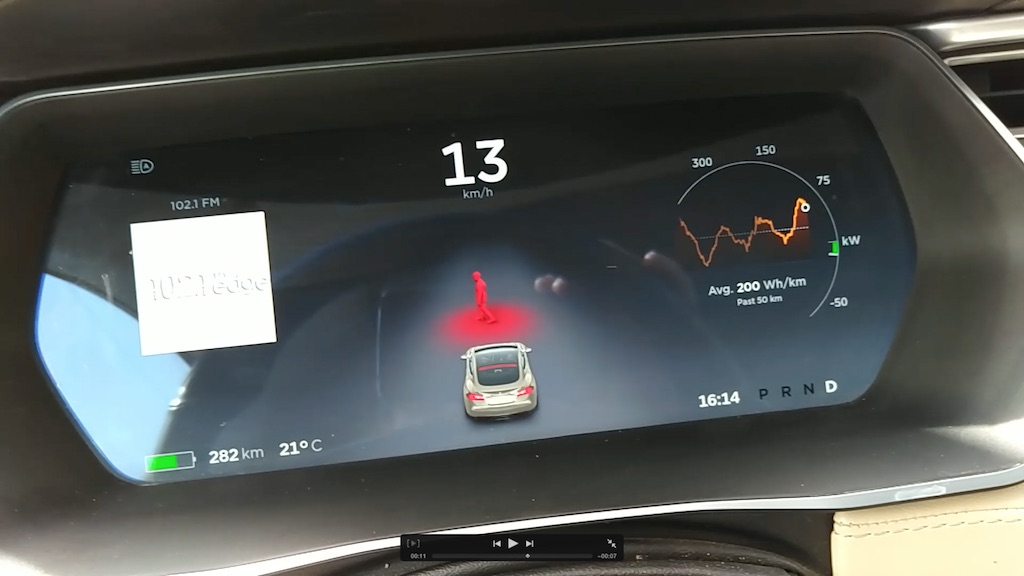
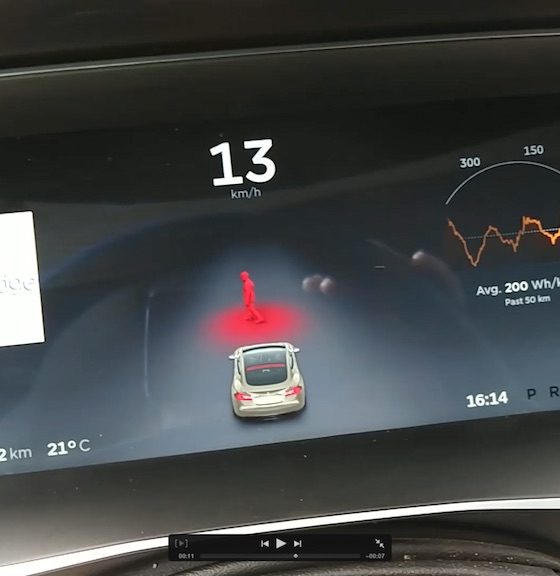
News
Tesla Model S owner reminds us of ‘Active Hood’ pedestrian safety feature
A relatively unknown Tesla safety feature called ‘Active Hood’, designed to reduce head injuries to pedestrians in the event of a frontal collision, was brought to light in a recent Model S owner’s video that attempts to capture Tesla’s Automatic Emergency Braking (AEB) in action. Active Hood which exists on European and Australian Model S vehicles uses pyrotechnics to raise the rear of the hood by several inches in order to soften the impact of a pedestrian and cyclist against a windshield during frontal impact.
Model S owner and Tesla Motors Club forum member Carspotter Daily posted a video that attempts to simulate a vehicle-pedestrian interaction. The vehicle was a first generation Autopilot vehicle under Firmware 8.0. It’s unclear whether CarSpotter was intentionally trying to trigger Tesla’s Active Hood feature or whether they were looking to test the AEB system, but despite not being able to trigger either feature the end result revealed, once again, Autopilot’s ability to detect humans. Another Tesla owner YouTuber KmanAuto first detected the pedestrian alert last November when he put a friend in front of of his moving Model S.
This type of granular detection of objects allows the vehicle to respond to potential collisions in the most appropriate way, with the objective to reduce collisions entirely. Though Active Hood was mentioned in the trailing notes at the end of the recent video, it’s not clear if the vehicle used in the video is a U.S. spec Model S or a European/Australian version that was included with that safety feature.
ALSO SEE: DIY Tesla Model S Pedestrian Alert: ‘Horn’ for the Oblivious
Active Hood is not a new feature but the fact that it has only been implemented on Tesla vehicles in select markets that mandate the technology has kept it largely under the radar. The technology was built into Tesla vehicles to comply with Euro NCAP Pedestrian Safety requirements that mandate vehicle manufacturers to maintain clearances between the hood and structural components underneath, to protect pedestrians in the event of a low to medium speed collision. These accidents often prove fatal to the pedestrian, as collisions at low to medium speeds typically cause the pedestrian’s body to fold over the hood with the head hitting the windshield.
The system was put to use in real world conditions in Australia in 2015 when someone driving a Tesla Model S collided with a kangaroo which caused the system to deploy. From what they saw after the accident, it looked like the adolescent ‘roo had a broken leg but was conscious enough after the accident to limp away which seems to indicate that it was successful in preventing immediate head trauma.
Tesla had a special challenge when designing Active Hood since the front trunk of a Model S is sealed to keep water out whereas hoods to internal combustion engine vehicles are generally vented. US Patent Application US20130076076 A1 details the specific challenges and solutions developed to allow the hood to pop up in response to an imminent collision with a pedestrian.
The English European version of the Tesla Model S manual lays out the technology in a much more user friendly format:
Active Hood
With Active Hood technology only existing on vehicles destined for the European and Australian markets, and Tesla being so aggressive about implementing safety features, the natural question is “why hasn’t Tesla made this a standard global safety feature?” An early Euro NCAP crash test video showed that Tesla began working hard at doing everything it can to avoid the accident in the first place. After all, avoiding a collision in the first place is far better for all parties involved than just mitigating what happens afterwards.

News
Tesla is improving Giga Berlin’s free “Giga Train” service for employees
With this initiative, Tesla aims to boost the number of Gigafactory Berlin employees commuting by rail while keeping the shuttle free for all riders.
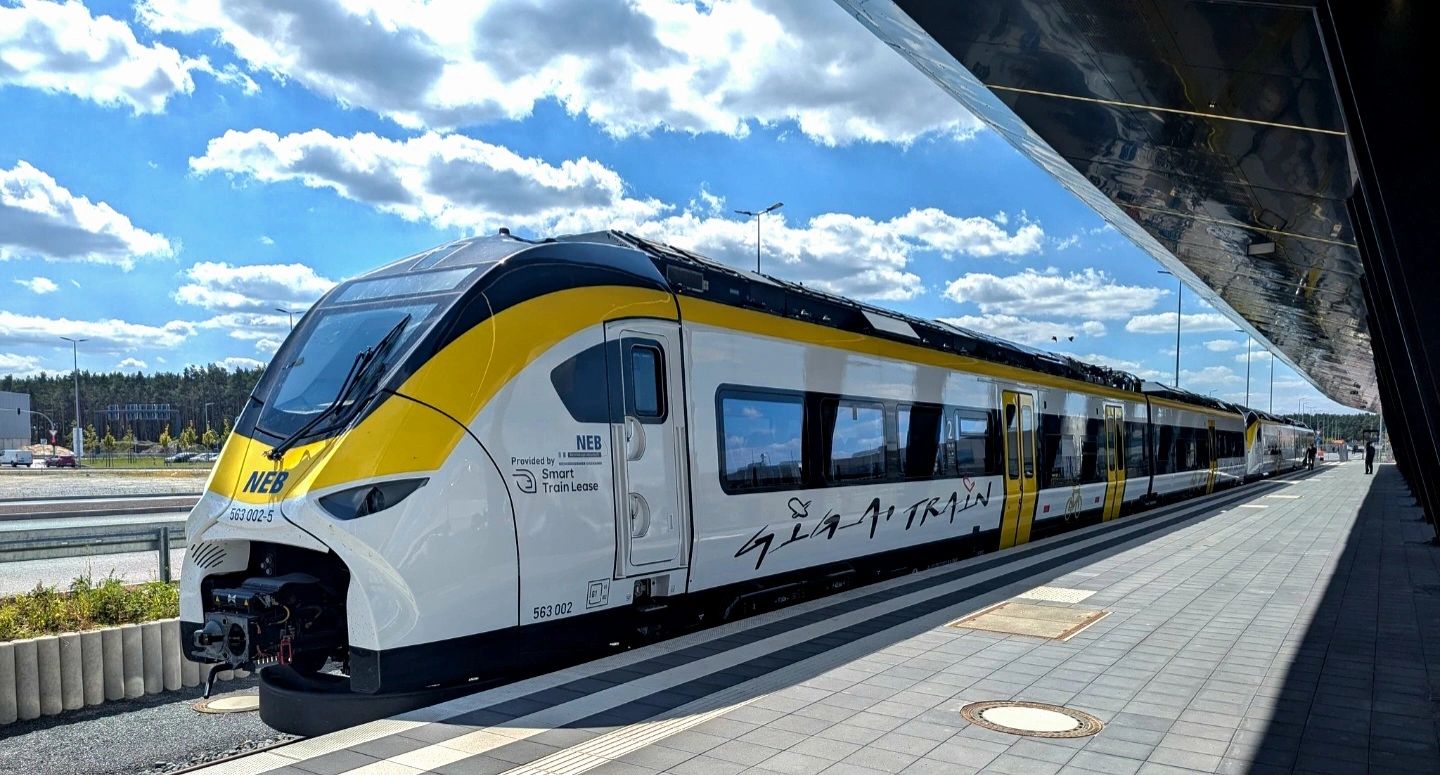
Tesla will expand its factory shuttle service in Germany beginning January 4, adding direct rail trips from Berlin Ostbahnhof to Giga Berlin-Brandenburg in Grünheide.
With this initiative, Tesla aims to boost the number of Gigafactory Berlin employees commuting by rail while keeping the shuttle free for all riders.
New shuttle route
As noted in a report from rbb24, the updated service, which will start January 4, will run between the Berlin Ostbahnhof East Station and the Erkner Station at the Gigafactory Berlin complex. Tesla stated that the timetable mirrors shift changes for the facility’s employees, and similar to before, the service will be completely free. The train will offer six direct trips per day as well.
“The service includes six daily trips, which also cover our shift times. The trains will run between Berlin Ostbahnhof (with a stop at Ostkreuz) and Erkner station to the Gigafactory,” Tesla Germany stated.
Even with construction continuing at Fangschleuse and Köpenick stations, the company said the route has been optimized to maintain a predictable 35-minute travel time. The update follows earlier phases of Tesla’s “Giga Train” program, which initially connected Erkner to the factory grounds before expanding to Berlin-Lichtenberg.
Tesla pushes for majority rail commuting
Tesla began production at Grünheide in March 2022, and the factory’s workforce has since grown to around 11,500 employees, with an estimated 60% commuting from Berlin. The facility produces the Model Y, Tesla’s best-selling vehicle, for both Germany and other territories.
The company has repeatedly emphasized its goal of having more than half its staff use public transportation rather than cars, positioning the shuttle as a key part of that initiative. In keeping with the factory’s sustainability focus, Tesla continues to allow even non-employees to ride the shuttle free of charge, making it a broader mobility option for the area.
News
Tesla Model 3 and Model Y dominate China’s real-world efficiency tests
The Tesla Model 3 posted 20.8 kWh/100 km while the Model Y followed closely at 21.8 kWh/100 km.
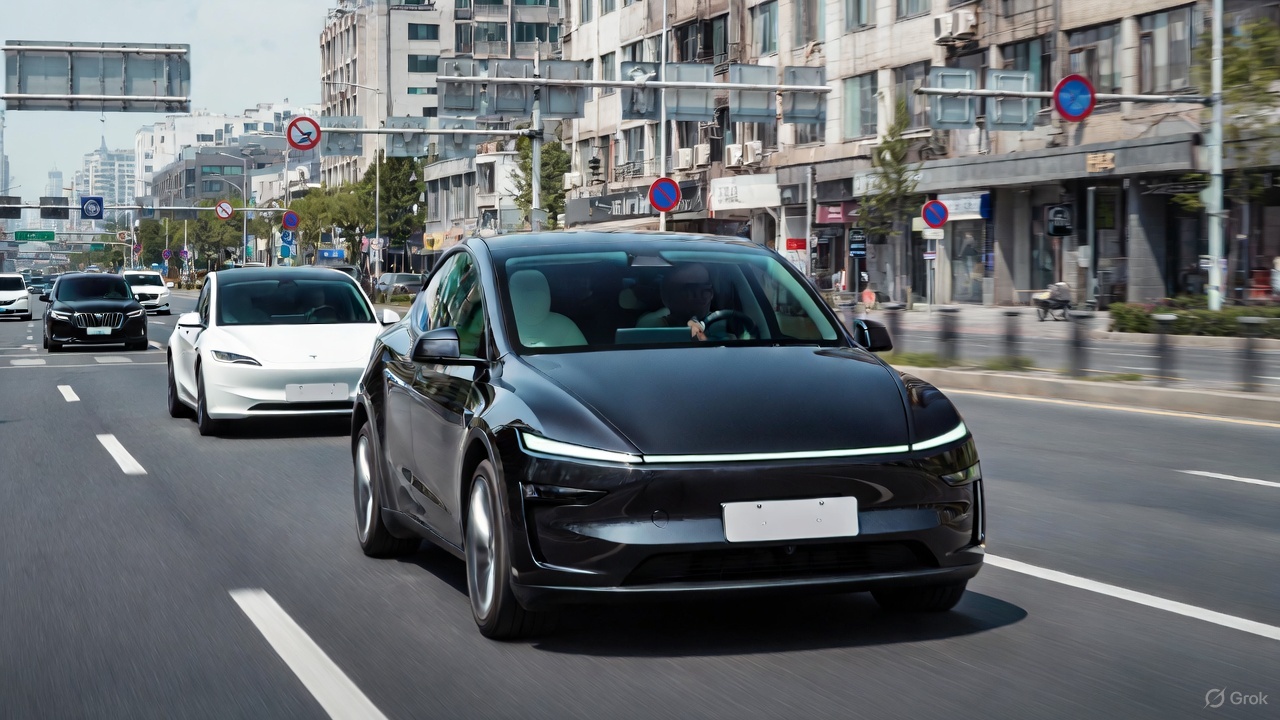
Tesla’s Model 3 and Model Y once again led the field in a new real-world energy-consumption test conducted by China’s Autohome, outperforming numerous rival electric vehicles in controlled conditions.
The results, which placed both Teslas in the top two spots, prompted Xiaomi CEO Lei Jun to acknowledge Tesla’s efficiency advantage while noting that his company’s vehicles will continue refining its own models to close the gap.
Tesla secures top efficiency results
Autohome’s evaluation placed all vehicles under identical conditions, such as a full 375-kg load, cabin temperature fixed at 24°C on automatic climate control, and a steady cruising speed of 120 km/h. In this environment, the Tesla Model 3 posted 20.8 kWh/100 km while the Model Y followed closely at 21.8 kWh/100 km, as noted in a Sina News report.
These figures positioned Tesla’s vehicles firmly at the top of the ranking and highlighted their continued leadership in long-range efficiency. The test also highlighted how drivetrain optimization, software management, and aerodynamic profiles remain key differentiators in high-speed, cold-weather scenarios where many electric cars struggle to maintain low consumption.
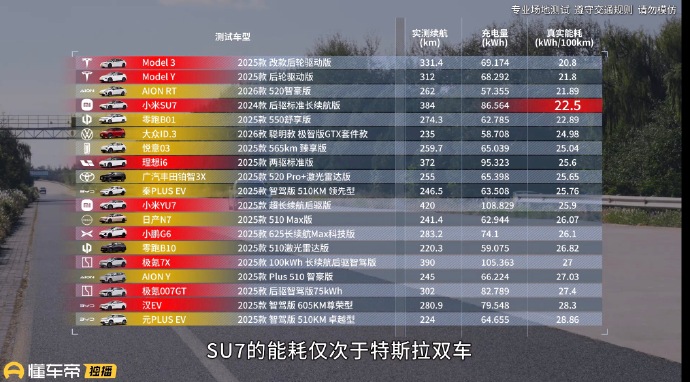
Xiaomi’s Lei Jun pledges to continue learning from Tesla
Following the results, Xiaomi CEO Lei Jun noted that the Xiaomi SU7 actually performed well overall but naturally consumed more energy due to its larger C-segment footprint and higher specification. He reiterated that factors such as size and weight contributed to the difference in real-world consumption compared to Tesla. Still, the executive noted that Xiaomi will continue to learn from the veteran EV maker.
“The Xiaomi SU7’s energy consumption performance is also very good; you can take a closer look. The fact that its test results are weaker than Tesla’s is partly due to objective reasons: the Xiaomi SU7 is a C-segment car, larger and with higher specifications, making it heavier and naturally increasing energy consumption. Of course, we will continue to learn from Tesla and further optimize its energy consumption performance!” Lei Jun wrote in a post on Weibo.
Lei Jun has repeatedly described Tesla as the global benchmark for EV efficiency, previously stating that Xiaomi may require three to five years to match its leadership. He has also been very supportive of FSD, even testing the system in the United States.
Elon Musk
Elon Musk reveals what will make Optimus’ ridiculous production targets feasible
Musk recent post suggests that Tesla has a plan to attain Optimus’ production goals.
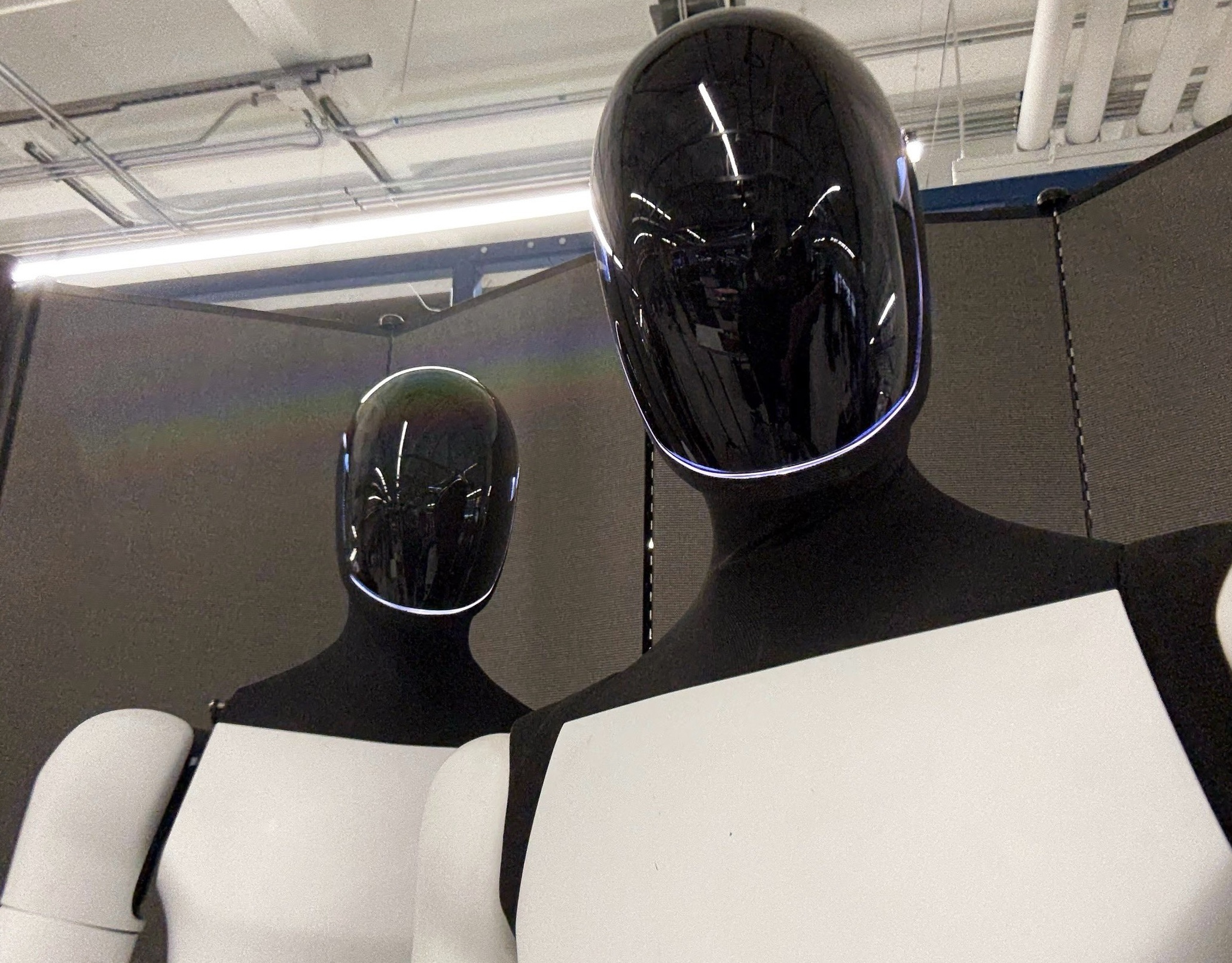
Elon Musk subtly teased Tesla’s strategy to achieve Optimus’ insane production volume targets. The CEO has shared his predictions about Optimus’ volume, and they are so ambitious that one would mistake them for science fiction.
Musk’s recent post on X, however, suggests that Tesla has a plan to attain Optimus’ production goals.
The highest volume product
Elon Musk has been pretty clear about the idea of Optimus being Tesla’s highest-volume product. During the Tesla 2025 Annual Shareholder Meeting, Musk stated that the humanoid robot will see “the fastest production ramp of any product of any large complex manufactured product ever,” starting with a one-million-per-year line at the Fremont Factory.
Following this, Musk stated that Giga Texas will receive a 10 million-per-year unit Optimus line. But even at this level, the Optimus ramp is just beginning, as the production of the humanoid robot will only accelerate from there. At some point, the CEO stated that a Mars location could even have a 100 million-unit-per-year production line, resulting in up to a billion Optimus robots being produced per year.
Self-replication is key
During the weekend, Musk posted a short message that hinted at Tesla’s Optimus strategy. “Optimus will be the Von Neumann probe,” the CEO wrote in his post. This short comment suggests that Tesla will not be relying on traditional production systems to make Optimus. The company probably won’t even hire humans to produce the humanoid robot at one point. Instead, Optimus robots could simply produce other Optimus robots, allowing them to self-replicate.
The Von Neumann is a hypothetical self-replicating spacecraft proposed by the mathematician and physicist John von Neumann in the 1940s–1950s. The hypothetical machine in the concept would be able to travel to a new star system or location, land, mine, and extract raw materials from planets, asteroids, and moons as needed, use those materials to manufacture copies of itself, and launch the new copies toward other star systems.
If Optimus could pull off this ambitious target, the humanoid robot would indeed be the highest volume product ever created. It could, as Musk predicted, really change the world.









